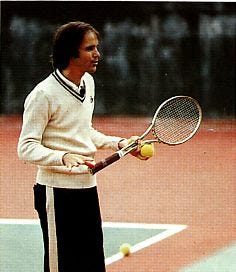Learning 'the inner game'
The Inner Game Series was founded by Tim Gallwey, a former tennis player at Harvard University. Gallwey noticed conventional teaching methods were often leading to individuals performing with too much thought and began to leverage his experience with meditation to integrate Eastern philosophical ideas into his coaching. Gallwey wrote The Inner Game of Tennis in 1974, and followed it with my recent read, Inner Skiing, in 1977. The book is as much about sport pedagogy as it is about sport psychology and offers a multitude of concepts and frameworks to support individuals on their journey of mastering the inner game.
After succumbing to all the hype and recommendations of the book, I picked up a copy of ‘The Inner Game of Tennis’ in early 2019. As an outcome-driven 22-year-old university hockey player, I was beginning to expand my mental approach to sport. I continued to read ‘The Inner Game of Golf’, with both of these contributing to my ability to ‘think less’ and ‘feel more’. I, like many athletes, was often consumed by results and felt I lacked the ability to get myself ‘unstuck’. Not only was this inhibiting my performance, but I genuinely wasn’t having fun playing my sport. I was excited to revisit the Inner Game concepts five years later and see how these ideas may hit me differently now and how they could help me serve my clients.
Self 1 and Self 2
Gallwey presents the conclusion that performance can be enhanced in two ways; by growing potential, or by decreasing interference. The main framework Gallwey presents to decrease self-interference is differentiating between Self-1 and Self-2. Self-1, according to Gallwey, is our critical mind. This version of us is judgemental, egotistical, and constantly making comparisons. Self-1 isn't our own voice but stems from a collection of self-concepts, fears, and doubts. Self-2, however, is our intuitive self. Self-2 is responsible for performing our actions and contains instincts, memory, and the body’s inherent ability to execute tasks without overthinking. By quieting Self-1, Gallwey suggests that we can get out of our own heads and allocate that attention and energy to Self-2, which is where our true potential is stored. The paradox with Self-2 is that it cannot be achieved through the will. Gallwey discusses how we must create these conditions internally before they can express themself externally. One example mentioned in the book is ‘feeling where our skis are’, as opposed to ‘knowing where they should be’. ‘Should’, according to Gallwey, is a concept of the way things aren’t instead of what they are. It is precisely this judgement that Gallwey suggests is representative of Self-1.
Non-judgemental awareness
So how does one quiet Self-1? Gallwey presents non-judgemental awareness as a key ‘intervention’ for self-critical thinking. Our aim with this awareness is to remove value judgments we place on things of being either good or bad. Awareness is much more about the experience of something, whereas thinking is conceptualizing what we are experiencing. This is quite revolutionary for an athlete from my perspective because as athletes we are constantly in evaluation mode. To begin seeing things as they are, free of external evaluation, is a radical concept that can drastically help us maintain our presence on the task at hand. We therefore can begin to see through fear by having more objective perceptions of our surrounding environment. There is nuance to this skill, though, as Gallwey notes that awareness without the will may lack direction, and conversely, the will the achieve without awareness is strained and lacks refinement needed to reach excellence. There is certainly a dance taking place here, where early in my journey I recall thinking I needed to banish all will and effort. This is not the intention of The Inner Game. Rather it is to remove judgement to allow the will to be expressed organically, naturally, and without friction. Thus, performance is less about controlling outcomes and more about removing self-imposed barriers, such as fear and judgment.



